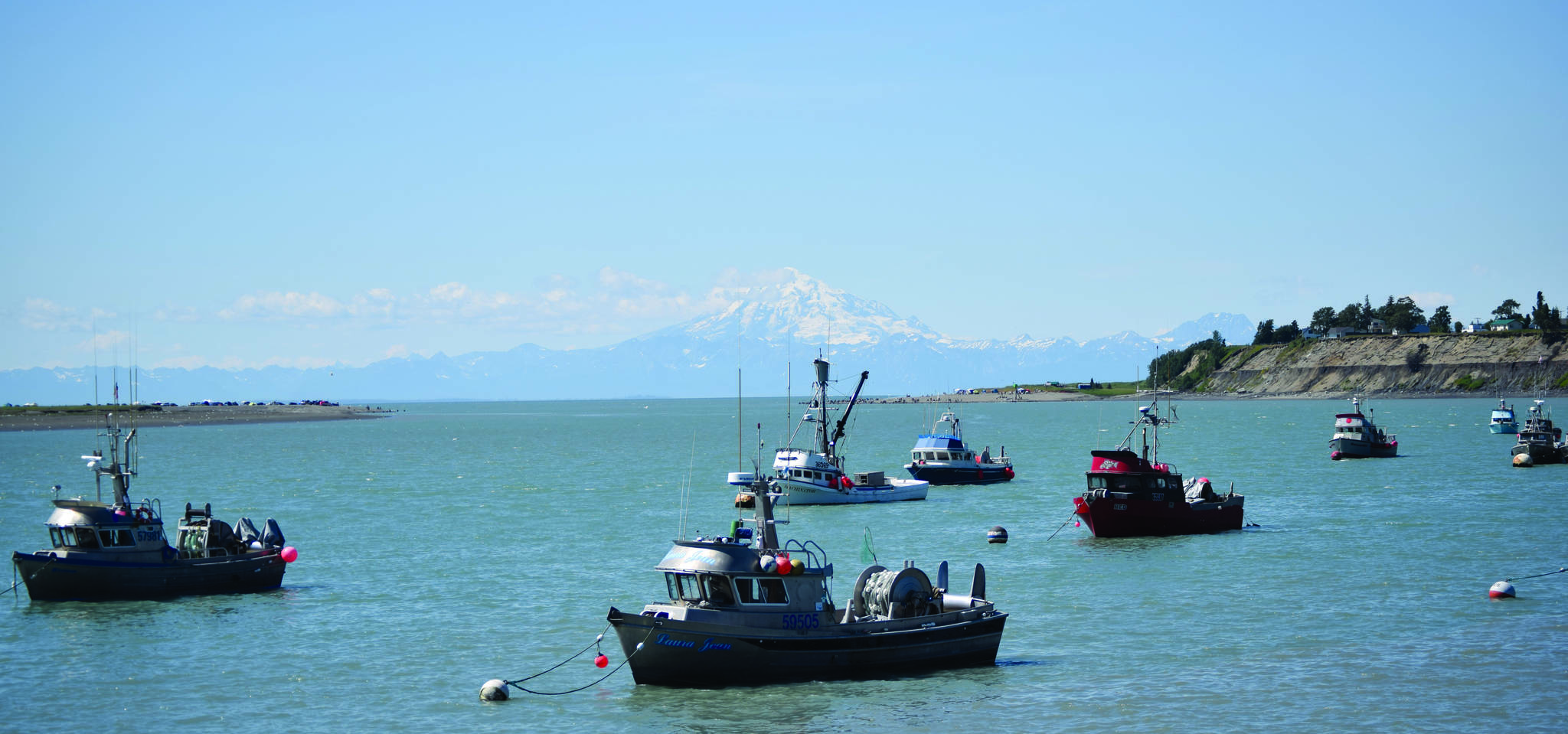Following a decision from Alaska’s Department of Fish and Game, the east side of the Upper Cook Inlet’s commercial set net fishery and all king salmon sport fishing on the Kenai River will be closed starting on Friday.
Starting at 12:01 a.m. on Friday, all sport fishing for king salmon on the Kenai River and in marine waters of Cook Inlet north of Bluff Point is closed. All commercial set net fisheries on the east side of Upper Cook Inlet will be closed as well. By current regulation, drift gillnetting is not allowed within 1 mile of the shoreline north of the Kenai River or within 1.5 miles of the south Kenai River shoreline. Saltwater king salmon fisheries north of Bluff Point will also be closed.
The actions are the latest move from ADF&G in their attempts to protect the Kenai River’s king salmon population, which has experienced weak runs this year and is not expected to meet its optimal escapement goal.
ADF&G Commissioner Doug Vincent-Lang said in a Wednesday press release that he recognizes the economic impact this decision will have on the commercial fishing industry, but the priority of the department is to protect the king salmon population in the long run.
“Alaska has led the salmon-producing provinces by example when it comes to sustainable management of our salmon populations,” Vincent-Lang said in the release. “Most often, that active management has produced abundance and consequential increased harvest upon which our economy has capitalized and thrived. Unfortunately, we are not projecting to meet the minimum escapement goal for late run Kenai River king salmon and now sustainable management mandates that we act just as decisively to save this great resource.
“We understand that our actions come with a great cost and hardship to many individuals and businesses, but we have to take these actions to ensure fishing opportunities for future generations of Alaskans in all associated industries. The Kenai River king salmon are experiencing an extended period of low productivity and restricting the fisheries is necessary to ensure their sustainability.”
The current optimal escapement goal for the late-run of Kenai River king salmon is between 15,000 to 30,000 large fish. As of July 21 — just four days before the historic midpoint of the run — only 4,520 large king salmon have passed the ADF&G sonar. This puts the in-season projection at approximately 12,700 large fish, and without further restrictions the Department does not expect the escapement goal to be achieved.
The management plan for this run states that if escapement is projected to be less than 15,000, the department is required to close the sport fisheries to king salmon fishing and also close the gillnet and set net commercial fisheries.
Rick Green, special assistant to the ADF&G commissioner, told the Clarion Wednesday that commercial fishing permits issued by the state are issued for all salmon and are not specific to different species. That’s part of the reason why the commercial fisheries are being shut down due to low king salmon counts, even though king salmon typically don’t make up a majority of commercial harvests.
“Every king matters at this point,” Green said.

